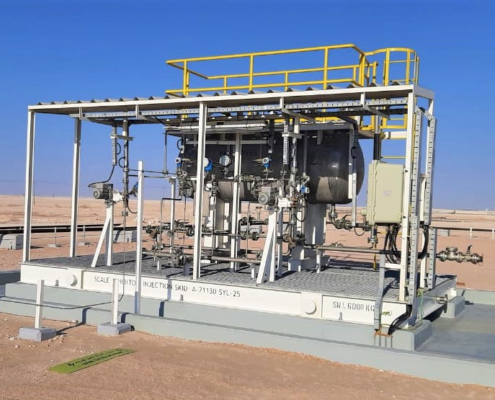
Engineering, Procurement, Construction (EPC) Projects
Durrat Oil Drilling and
Services Limited is one of the leading Oil & Gas Contractors in Dubai
has embarked on the journey of managing several EPC projects in the PDO
concession area.
As an EPC contractor, • the
company is responsible for detailed engineering or design involved with the
project, • procurement of all the necessary equipment and materials required to
build the project, and • construction of the facility
Detailed
Design
In the Detailed Design
phase, the project specifications developed are further detailed to the level
which is needed for procurement, fabrication/construction, testing,
commissioning, and handover. Key assurance and design reviews are carried out
during this phase, after incorporating any changes to the design basis and
actual vendor design data. Vendors participate in these reviews so that any
assumptions made in the design are corroborated by them and all controls and
safeguarding issues in vendor packages are addressed to the Client’s
satisfaction.
After the Detailed Design deliverables are developed to a reasonable level of detail, a Constructability Review is done with participation from experienced construction personnel. For greenfield projects, this may be done in a 3D model review. In brownfield projects, a site review in addition to a 3D model review is required.
During the
Design, the contractor is expected to set up a Material Management System
including tracking, receipt, handling, storage and preservation, and
installation.
A
Commissioning Team is set up at the early stages of Detailed Design and
involved in the review of process schemes and they participate in reviews such
as HAZOP to ensure the requirements of commissioning are incorporated in the
design stage to enable flawless start-up. For large complex projects early
commissioning planning, input is required in the front-end phase of the
project, as the commissioning by systems may determine the ‘packaging’ of the
facilities’ scope.
The
Detailed Design scope includes the development of commissioning and start-up
procedures, Operating and Maintenance manuals, Plant Maintenance System, HSE
cases, Safety Critical Elements, etc. Close-out of the Detailed Design phase
includes handover of these deliverables in the correct data format.
Procurement
The
Procurement phase begins before Detailed Design, particularly for long-lead
materials and equipment. The remaining procurement commences during the
Detailed Design phase and continues into Construction. The company has specific
teams handling in-house Procurement as wells as Projects. The teams use the
latest software in SAP for all activities related to this discipline.
Construction
The size of
construction scopes/projects varies from very small plant modifications to mega
construction projects, involving a large workforce and construction periods of
anything between one to three years. Contract arrangements may vary depending
on the size and complexity of the work ranging from agreed unit rates to
lump-sum prices.
Construction
Objectives
• Overall:
To construct the project as per the approved design drawings, specifications
and standards in a manner that ensures the overall project objectives are met,
typically including specific targets set for cost, schedule, HSE, quality, and
local content:
• Safety:
To design and construct the facility in a manner that minimizes risk to the
construction workforce during construction and ensures a safe and orderly
start-up on completion.
• Schedule:
To develop and pursue a proactive, realistic, and sufficiently detailed
execution plan in line with overall project objectives that effectively
utilizes available design deliverables labour, materials, and equipment in the
most efficient manner.
• Quality:
To maintain rigorous quality assurance and control on all construction
activities, to ensure full compliance with project technical specifications and
standards, and allow timely and efficient (pre)commissioning and start-up, as
per overall schedule.
• Cost: To
execute the project within budget and to continuously look for the most
cost-effective implementation options.
• Local
Content: To meet the local content requirements and support the development of
lCV capability.
•
Management of Change: To manage and control changes that occur during
construction (e.g. site queries/clashes) to minimize the impact on Cost,
Schedule, Quality, and other project objectives.